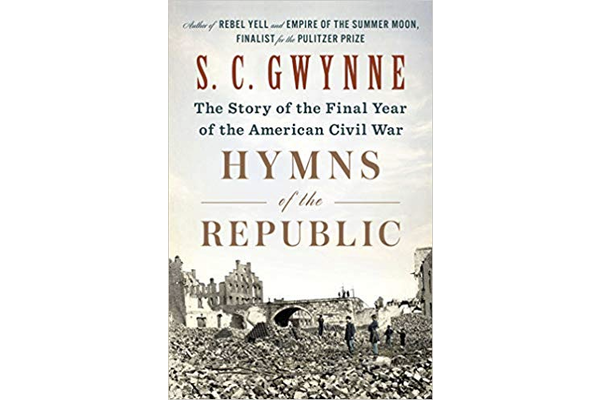The Civil War's Unforgiving Final Year and How It Changed the War’s Legacy
A few years ago, I wrote a biography of Stonewall Jackson called Rebel Yell, which, in addition to tracking his life, chronicled the first two years of the American Civil War. Jackson fought in the war’s earliest battles, and later in some of its biggest: Second Manassas, Antietam, Fredericksburg, Chancellorsville. These were violent, bloody affairs, made all the more horrifying because neither the North nor Souththought the war would be so long and destructive.
But as horrific as the war turned out to be, what happened in the first few years seems almost innocent compared to what happened in the last year. I don’t mean to diminish the human sacrifice, but the opening of the conflict was, as some contemporaneous historians observed, a “bandbox” war compared to what came later. Men and boys marched off to war with light in their eyes and hope in their hearts and bands playing in their town squares. Even when they died horribly of wounds or sickness, the idea of glory persisted. Hope and optimism still somehow trumped hatred, and despondency.
As I researched my new book about the war’s final year, Hymns of the Republic, I was absolutely struck by how hard, cruel, and bitter the war had become, and, just as important, how hard, bitter, and cruel its participants had become.
What happened in the war’s final, brutal phase, is what I call the Lee Paradox.
Though Robert E. Lee was not the sole reason the North could not beat the South—the war was a big place, with many theaters and many players—he was inarguably the main reason. For two years he had tied the Union in knots, politically as well as militarily. He had made fools of its generals. At the beginning of the war’s last year, Ulysses S. Grant had taken charge of the Union armies and particularly of the Army of the Potomac, whose mission was to destroy Lee. To the dismay of people in the North, Grant utterly failed to do that. Sixty-five thousand Union casualties in 2 months in Virginia testified to that. Lee would not be beaten. And so the war dragged on.
But Lee’s—and the South’s—ability to survive came at a ghastly price. The more Lee won—or at least did not lose—the more the South itself was destroyed. Survival meant destruction. This is the Lee Paradox. The collapsing Confederacy was steadily taking down everything and everyone with it. Two-thirds of all Southern wealth had vanished, along with 40 percent of its livestock, half of its farm machinery, and 25 percent of all white men between the ages of 25 and 40.
The worst part of Lee’s success was the hard war against civilians that it unleashed in the form of devastatingly destructive marches by Union generals William Tecumseh Sherman and Philip Sheridan. Their targets were not armies. After the fall of Atlanta in September 1864, Sherman was not much interested in armies. He wanted to break the South’s unbreakable will, and so the war was conducted mostly against civilians and their assets. Sherman’s march through Georgia in the fall of 1864 was horrendously destructive of all productive assets, from cotton gins to crops and barns and railroads. It was exceeded in destruction and horror only by what Sherman’s army did in South Carolina, which made the march to the sea in Georgia seem almost kindly by comparison. In the Shenandoah Valley that same fall, Phil Sheridan’s troopers fanned out behind his infantry and burned everything they could get their hands on except, technically, houses, though they burned plenty of those, too. Sheridan’s burning campaign also gave impetus to a brutal guerrilla war in Virginia, in which commanders like John Singleton Mosby and George Armstrong Custer engaged in retaliatory killings of captive soldiers. This was bitterness on a scale unseen in the war.
Enhancing this turn into hatred was the presence, in the Union army, of 180,000 black troops, 10 percent of the entire Union army, more than 60 percent of whom had recently been slaves. Confederate soldiers hated them with a passion, targeting them for slaughter in battles and giving them no quarter when captured.
What was happening in the fall and winter of 1864-1865 was perhaps best summed up by Sherman himself, the poster boy and ideologue of the hard new war. He wanted, as he put it, “to make [the South’s] inhabitants feel that war and individual ruin are synonymous.”
Perhaps not lost on Robert E. Lee—this was the final irony of the Paradox—was the fact that he was personally ruined by his own success. By the end of the war he had lost his family’s three large estates—including Arlington House (where Arlington National Cemetery is today)—all of his productive assets(including the people he once enslaved), and all of his personal money and investments. While he and the Army of Northern Virginia fought hard to the end, his shattered family became refugees, virtual paupers. The South, whose armies surrendered in the spring of 1865, was merely a shell of itself, so hollow and substanceless that it would take much of it the better part of a century to dig out. The bitterness and hatred would never be forgotten.
